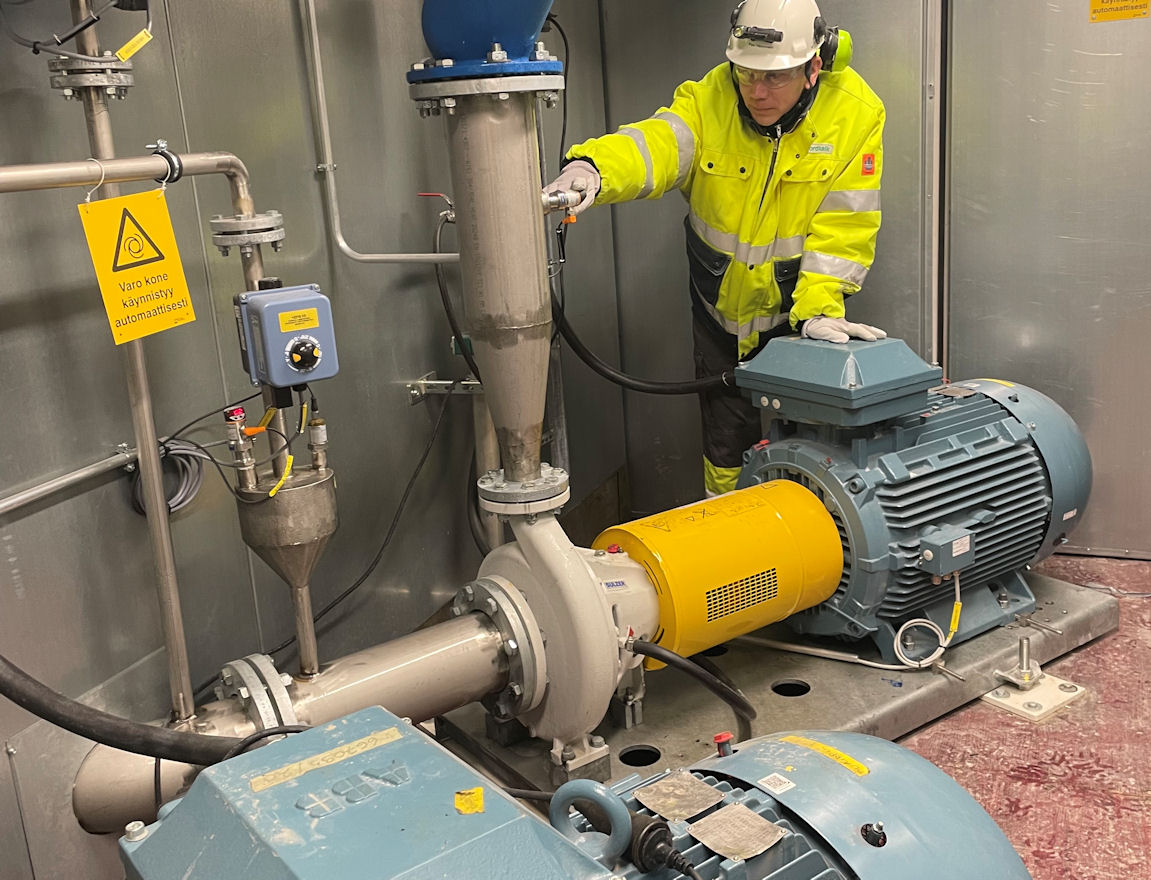
About a million cubic meters of water is pumped out from Nordkalk’s quarry in Lappeenranta every year. In 2022, the pump system was partially updated with some more efficient pumps while the electric power distribution was improved as well. Due to these renovations, the energy consumption needed for pumping water decreased by approximately 25 per cent. Emissions were reduced by 40%.
As the excavation goes deeper, the quarry’s pump system must be improved regularly. In Lappeenranta, a more thorough renovation became relevant in 2021, when it was noticed how the capacity of the existing system wasn’t enough and water started to build up on the bottom of the pit.
“The aim of the renovation was to replace some of the old pumps with more efficient ones with a better operating efficiency and with a capacity to pump the water the from the bottom of the pit all the way up to the ground”, explained Pasi Hänninen, from the Lappeenranta quarry, who was in charge of the project.
A new medium voltage transformer was built next to the water pumping station. This way the power distribution works in the whole pumping area and there is no need to generate electricity with an internal combustion engine generator running on fuel oil. At the same time, some of the old pumps were replaced with more efficient ones.
“As much as 60% of the energy used by an internal combustion engine generator goes to waste in a form of thermal energy. The renoval of the pump system gave us significant energy efficiency benefits, but transition from fuel oil to electrical energy decreased emissions even more”, said Hänninen.
40 per cent less CO2 emissions
As part of the renovation, some of the old submersible pumps were replaced with centrifugal pumps as these pumps are more efficient. To further improve energy efficiency, some of the pipelines were renewed. The renovation project was one of the most significant energy efficiency project for Nordkalk in 2022. It helped save about 1400 MWh energy. This corresponds to the average yearly energy consumption of 400 electric cars.
Source: the average consumption of an electric car I 280 kWh/month, 3360 kWh/year = 3.4 MWh.
The achieved savings in the comparison period*:
The development will not end here and Hänninen shares already next plans.
”Our aim is to, among other things, further improve the removal of surface water, so that it wouldn’t end up on the floor of the pit in the first place. In addition, some other pumps will be replaced with more efficient ones. There is always room for improvement!”.
*the old one in use 03/21-02/22, the new one in use 04/22-08/22
We use cookies to give you the best internet experience. By giving consent, you accept the use of cookies in accordance with our cookie policy.

When you visit any web site, it may store or retrieve information on your browser, mostly in the form of cookies. Control your personal Cookie Services here.